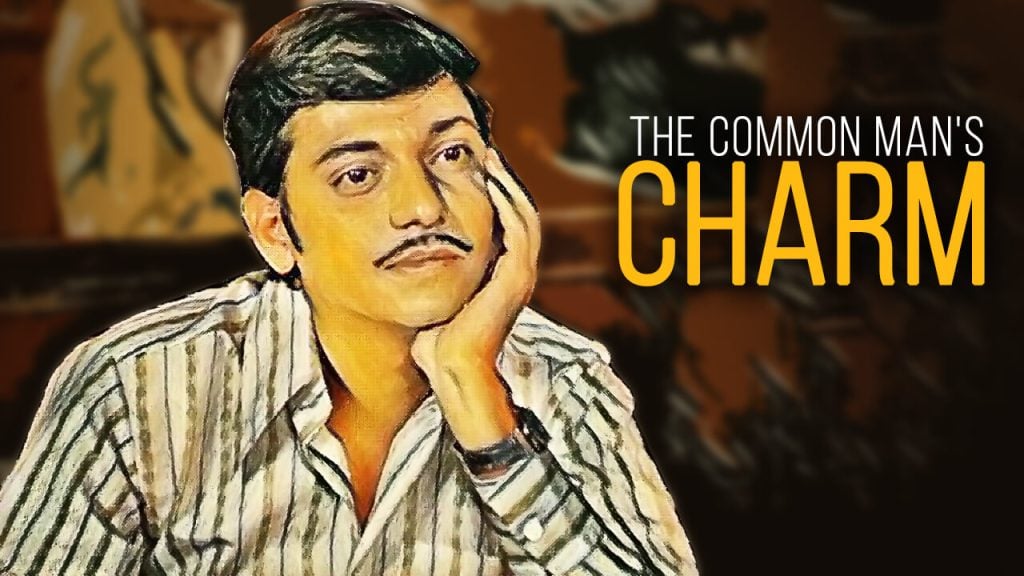Amol Palekar is a well-known Indian actor, director, and producer, particularly remembered for his significant contributions to Hindi and Marathi cinema. He made a unique mark during the 1970s and 1980s, an era that witnessed both mainstream and parallel cinema thriving in India. While Palekar’s career spanned decades, it’s his distinctive on-screen persona, his contributions behind the camera, and his versatility across multiple mediums that contributed to his fame and, consequently, his wealth.

Early Life and Background
Amol Palekar was born on November 24, 1944, in Mumbai, Maharashtra. He comes from a middle-class Maharashtrian family, and like many others from his generation, he was encouraged to pursue education and secure a stable career. Initially, he pursued a diploma in Fine Arts from Sir J.J. School of Art, Mumbai, and began his career as a painter. His early association with theater, especially with experimental Marathi theater groups, helped him develop a deeper appreciation for the performing arts.
His work in theater is critical to understanding his career trajectory, as it introduced him to a network of influential artists and directors. This experience not only honed his acting skills but also laid the foundation for his directorial ventures later in his life. His roots in the performing arts can be traced to his association with Marathi theater, which remains an essential part of his professional and creative journey.
Breakthrough and Bollywood Career
Palekar’s Bollywood breakthrough came with Basu Chatterjee’s 1974 film Rajnigandha. This film marked the beginning of a series of performances in what came to be known as “middle cinema,” which typically avoided the melodrama of mainstream Bollywood while still maintaining a strong emotional core. Rajnigandha was a slice-of-life narrative, which was uncommon for the time, and Palekar’s understated acting style fit perfectly with the film’s tone. The film was a critical and commercial success, and it opened the door for Palekar’s career as an actor.
Throughout the 1970s and 1980s, Palekar starred in several iconic films, such as Chhoti Si Baat (1976), Gol Maal (1979), and Baaton Baaton Mein (1979), among others. His work in these films made him a beloved figure in Indian cinema. His roles typically portrayed him as the “common man”—an underdog with relatable struggles, which resonated with the audience during that era. Unlike many Bollywood heroes who exuded larger-than-life personas, Palekar’s appeal lay in his everyman qualities, endearing him to the masses.
Income from Films
While Amol Palekar was not among the highest-paid actors of his time, he still earned a decent income from his films. Given that many of his films were commercial successes, it is safe to assume that he commanded respectable remuneration for his roles. Moreover, Palekar was selective with his projects, focusing more on quality than quantity, which likely affected his overall earnings compared to more prolific contemporaries like Amitabh Bachchan or Dharmendra.
Transition to Direction
By the mid-1980s, Palekar had begun to shift his focus from acting to directing. His directorial debut came with the 1981 Marathi film Aakriet. However, it was his Hindi directorial ventures that gained widespread recognition. Films like Paheli (2005), which was India’s official entry for the Academy Awards, and Thodasa Roomani Ho Jaayen (1990), demonstrated his flair for storytelling from behind the camera.
As a director, Palekar had a reputation for creating films with deep emotional and philosophical underpinnings, often exploring social issues or human relationships. His ability to present nuanced characters and layered narratives earned him praise from critics and audiences alike. Directing added another stream of income to Palekar’s career, and as a successful director, he would have been able to command a significant share of the film’s profits, further adding to his wealth.
Marathi Cinema and Television
Amol Palekar’s contributions to Marathi cinema are often underappreciated. He played a pivotal role in both acting and directing films in Marathi, significantly elevating the industry. His work in Marathi films not only brought him regional recognition but also helped him secure financial stability.
In addition to his work in films, Palekar made notable contributions to Indian television. Shows like Kachchi Dhoop (1987), which he directed, earned him significant attention in the small screen industry. His presence on television added yet another dimension to his career and brought him an additional income stream.
Artistic Career and Financial Stability
It’s important to note that Amol Palekar’s journey is not defined solely by his on-screen roles or directorial ventures. His early career as a painter and his consistent association with the theater helped him stay financially secure even when his film career did not reach the stratospheric heights achieved by some of his contemporaries. His background in art and theater allowed him to explore different avenues of income.
While exact figures regarding his wealth are not publicly available, industry estimates suggest that Amol Palekar’s net worth is likely to be in the range of $5 million to $10 million. This figure takes into account his earnings from acting, directing, producing, and other ventures, including television and theater work. His career, which spans several decades, has allowed him to accumulate considerable wealth, even though he has not been as active in recent years.
Other Income Streams
Apart from films and television, Amol Palekar likely benefited from other income streams, including royalties from his films and possible investments in real estate or other businesses. Being an actor and director of his stature, he may have had opportunities to engage in public speaking, endorsements, and other related activities, which would have added to his financial portfolio.
Palekar’s involvement in socially relevant projects also suggests that he may have been involved in non-profit or governmental work, which, while not necessarily lucrative, adds to his reputation and influence. While some actors move into production houses or invest in film distribution, Palekar has largely kept his focus on creative pursuits.
Personal Life and Investments
Amol Palekar has led a relatively low-key personal life compared to some of his contemporaries. He has often spoken about valuing simplicity and avoiding the trappings of excessive fame and wealth. This likely reflects in his approach to finances as well. Rather than chasing wealth, Palekar has always emphasized creative satisfaction and meaningful work.
However, it’s reasonable to assume that Palekar has made prudent investments over the years. With his steady income from films, television, and theater, coupled with his artistic background, Palekar may have chosen to invest in properties, mutual funds, or other low-risk investment options that align with his risk-averse, balanced personality.
Amol Palekar’s Current Status
While he has become less active in recent years, Amol Palekar continues to be a respected figure in Indian cinema. His contribution to Indian films, particularly in the realm of middle cinema, has cemented his place in Bollywood history. The actor-turned-director is known for maintaining a quiet, understated life away from the limelight, choosing to focus on his creative and intellectual pursuits.
Though his net worth might not be as high as some of the mainstream superstars, Palekar’s wealth is more than sufficient for him to lead a comfortable life. Given his legacy and the numerous films and shows he has been a part of, Amol Palekar’s financial stability is likely secure through royalties, residuals, and past investments.
Legacy and Cultural Impact
Amol Palekar’s true wealth cannot only be measured in financial terms. His contributions to Indian cinema and theater have left an indelible mark on the industry. Palekar’s films continue to be revered by audiences who appreciate the subtler, more realistic aspects of Indian storytelling. His legacy is intertwined with the rise of middle cinema, which straddled the line between commercial and parallel cinema, making socially relevant stories accessible to a wider audience.
Even though Palekar may not have amassed the colossal wealth often associated with Bollywood superstars, his impact on the industry, especially through his directorial works, is undeniable. His artistic integrity, along with his body of work, ensures that he remains one of the most respected figures in Indian cinema.
Conclusion
Amol Palekar’s net worth, while not astronomically high by Bollywood standards, reflects a career built on artistic merit, meaningful contributions, and steady success across multiple fields. His earnings from acting, directing, television, and theater, combined with potential investments, likely place his net worth in the $5 million to $10 million range.
Palekar’s career demonstrates that success in the film industry isn’t only measured by commercial success or box office hits but by the impact one leaves on the industry and the audience. His financial success, while modest in comparison to the mega-stars of Bollywood, is a testament to his sustained efforts in the industry across multiple disciplines. His legacy, more than his wealth, remains his greatest achievement.


